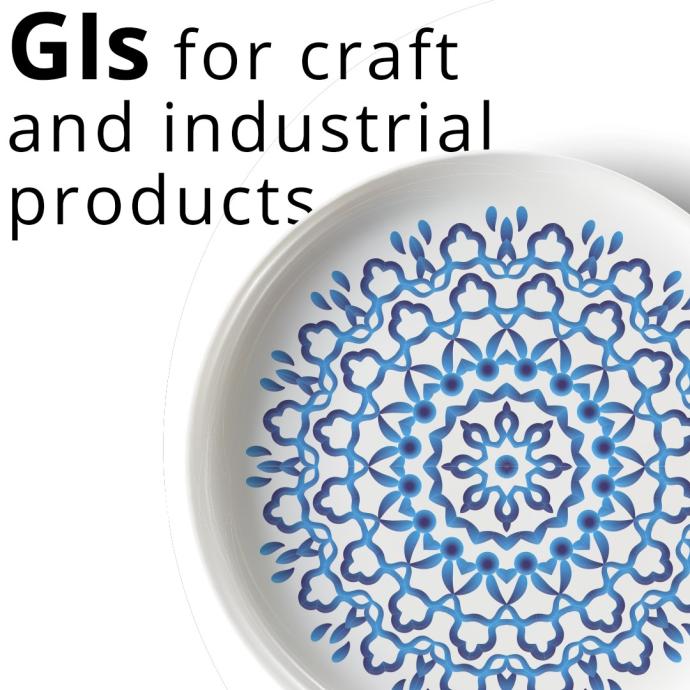
When you think of Perpignan (France), your thoughts turn immediately to its stunning jewellery, which is the result of a well-established tradition of excellence. Similarly, when you go to Solingen (Germany) and see the famous cutlery on display in local shops, you soon realise that those objects embody centuries of craftmanship.
Something that you may perhaps not be aware of is that, like other craft and industrial products, both Garnet de Perpignan (jewellery) and Schneidwaren aus Solingen (cutlery) are protected as geographical indications (‘GIs).
GIs are a particular type of intellectual property (‘IP’) that protects the name of products that have a specific geographical origin and possess a certain reputation or qualities, due to that place of origin. The use of the name protected by a GI is reserved for producers from that area and that manufacture a certain product in accordance with specified rules and standards. This means, for example, that a maker of garnet jewellery based outside of the Perpignan area will not be able to use the name ‘Garnet de Perpignan’ for their products. Most likely, aside from not being produced in Perpignan, such products will be also manufactured following different rules to those followed by Perpignan jewellers.
How craft and industrial products are protected today as GIs
In Europe, initially, the protection of GIs focused on agricultural products, including foods, wines and spirits. The European Union (‘EU’) has extensive legislation in place relating to the protection of agricultural products and foodstuffs, wines and spirit drinks. Names like Hånnlamb (lamb from the Gotland area in Sweden) and Beurre d’Ardenne (butter from the Ardennes in Belgium) are examples of registered agricultural GIs in the EU.
But what happens when the names to protect are those of craft and industrial products? Currently, the names of products such as knives and cutlery, jewellery, furniture, porcelain and ceramics, and lace may be protected across individual EU countries as GIs in accordance with national law.
After a court famously refused to grant the city of Laguiole the right to prevent the registration of ‘LAGUIOLE’ as a trade mark, in 2014 France passed a law that allows for the protection of craft and industrial products through an accreditation procedure administered by the national IP office (INPI). As a result of this law, many craft and industrial GIs have already been registered in France, the first of these being for Siège de Liffol (chairs, registered in 2016), Granit de Bretagne (granite, registered in 2017), and Limoges Porcelain (porcelain, also registered in 2017).
What is happening in the EU?
While other countries have systems in place that are similar to the French one, the protection available varies significantly across the EU, and there is currently no legislative framework that specifically protects craft and industrial GIs at the EU level.
Since 2011 the European Commission has been considering the opportunity to extend GI protection so as to encompass both agricultural, craft, and industrial products. The discussion of an EU system for craft and industrial GIs has intensified over the past few years. This is also because GIs are not just ‘rights’. They are tools that ensure local production is economically viable. These rights also strengthen the links between a product and other local activities such as promoting cultural activities, tourism, and art.
In 2020, a study commissioned by the European Commission did reveal that the protection of craft and industrial GIs would be beneficial overall to both consumers and producers, while also supporting regional development. It is clear that GIs can support sustainability goals and help further protect cultural heritage. In this sense, they could also contribute to setting circular economy objectives, which are at the heart of several EU policies.
The future ahead
Surveys reveal that, also as a result of the COVID-19 pandemic, consumers in Europe are increasingly concerned with sustainability and the importance of both making ‘greener’ choices and supporting local businesses. The protection of craft and industrial GIs can play a role in all this. In addition, the diversity of approaches across different EU countries may create frictions in the functioning of the EU internal market. Both aspects can support an even more intense discussion around the introduction of an EU framework to protect, as GIs, not just agricultural products but also craft and industrial products.
In 2020, the European Commission announced that it could propose legislation to introduce an EU-wide system for the protection of geographically-linked craft and industrial products. A legislative proposal was recently unveiled.
So, how will the future of craft and industrial products look like? It is likely that there will be more involvement from the EU and a specific legislative framework to protect them as GIs at the EU level. Stay tuned!
Eleonora Rosati is an Italian-qualified lawyer with experience in copyright, trade marks, fashion and internet laws. Dr Eleonora Rosati is a Full Professor of Intellectual Property (IP) Law, Director of the Institute for Intellectual Property and Market Law (IFIM), and Co-Director of the LLM in European IP Law at Stockholm University. She is also Of Counsel at Bird & Bird and is the author of several articles and books on IP issues.
This article wa first published in the September edition of Alicante News.
